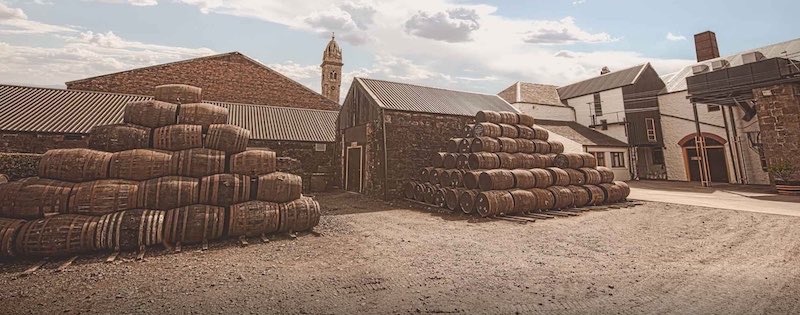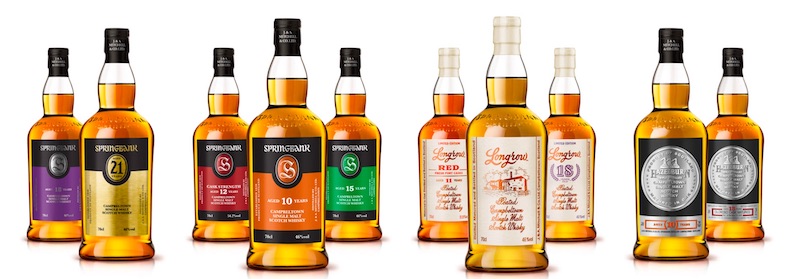What you should know about the Springbank Distillery

Picture Credits: www.springbankwhisky.com
The Springbank Distillery is a family-owned single malt whisky distillery located on the Kintyre Peninsula on Scotland’s west coast. It established on the site of Archibald Mitchell’s illicit still in 1828. It is one of the last surviving distilleries in Campbeltown, a place that once housed more 30 distilleries.
Short History of Campbeltown and Springbank Distillery

Picture Credits: www.springbankwhisky.com
In 1591, Campbeltown was first associated with whisky in official records. By 1601, it became a popular whisky smuggling centre as well as the place to produce illegal whisky. The Mitchell family (founders of Springbank) moved to Campbeltown as settlers from the Lowlands with skills as maltsters in 1660s.
Archibald Mitchell became a partner at Rieclachan Distillery in 1825 and was later joined by his brother Hugh Michell. When the laws were eased with the registration of whisky distillery, the Mitchell brothers founded Springbank in 1828. Built on the site of Riechlachan Distillery, Springbank became the 14th licensed distillery in Campbeltown.
The family continued to expand their whisky outreach. In 1834, Archibald’s sister, Mary Mitchell, founded Drumore Distillery. By 1837, Archibald’s sons, John and William Mitchell, took over the distillery. The two brothers worked to expand the family’s whisky business, with William founding Glengyle Distillery in 1872.
The family still owned many of the distilleries today. Currently, the 5th generation of the family is in charge at Springbank. He is the great, great grandson of Archibald.
The whiskies of Springbank

Picture Credits: www.springbankwhisky.com
The distillery produces three types of peated and unpeated malt whiskies. Most of them are single malts that are sorted into one of the three distinct brands of Springbank. A small percentage are sold to large blenders or made into Springbank’s own blended scotch labels.
The three distinct brands of Springbank single malts are
- Springbank Single Malt
This is possibly the most popular variation that bears the namesake of the distillery. The standard bottling is a 10 years old that is medium-peated and distilled 2.5 times. It is bottled at 46% abv. There are also cask strength Springbank bottles of 12, 15, 18 and 21 years old. This brand also releases wine cask editions on a regular basis. - Longrow Single Malt
Longrow is a name that was taken from the mothballed distillery founded by John Ross in 1824. Springbank revived the brand and bottled the first Longrow in 1973. The standard bottles are no-age statement editions, heavily-peated and doubled distilled. Nevertheless, there are some rare age-statement bottles such as the 16 years old. Longrow also has a Red edition that uses a different type of wine casks each year. Longrow won Best Campbeltown Single Malt at the 2013 World Whiskies Award. - Hazelburn Single Malt
This is the newest edition to the Springbank Distillery. It is also named after another mothballed distillery in Campbeltown. The liquid is first distilled in 1997 and bottled as a 10 years old. A 12 years old expression was released in 2009. Hazelburn is a non-peated, tripled distilled whisky.
Springbank’s whisky making process
Springbank is the only Scottish distillery that completes 100% of their production process on site. They malt 100% of their barley using the traditional floor malting methods. They also used many old pieces of machinery that were preserved and maintained over the years.
The whisky making process for Springbank is as follows:
- Malting – Traditional floor malting methods are used in this stage. Barley is steeped in cold, clean water and allowed to swell up to 3 days. After that, it is laid out in a 6-inch deep even layer on the malting floors where the Springbank team turns it at regular intervals.
- Kilning – Once the malt is ready, they are moved to a kiln where they will be dried over a peat fire, hot air or a combination of both, depending on the brand being produced. Kilning takes between 30 to 48 hours.
- Milling – When kilning is completed, the barley is crushed into a fine powder called grist.
- Mashing – Grist is then placed into a mashing tun where hot water is added. This process extracts all the sugar into a liquid. The team rakes the liquid 3 times during mashing.
- Fermentation – The liquid drained from the mash is known as wort. It is transferred to wooden wash backs and yeast is added to convert the sugars into alcohol over a period of 80 to 110 hours of fermentation.
- Distillation – The liquid from the wash back passes through the 3 copper stills of Springbank – the wash still, the low wines still and the spirit still. After that, the liquid is transferred to the spirit safe when the stillman monitors the progress. The different brands go through different distillation processes to differentiate their distinctive styles.
- Cask Filling – The new spirit is then transferred to empty casks specially selected for Springbank.
- Maturation – The new casks are then sent to the dark, moist warehouse and left for a minimum of 3 years in maturation. Most whiskies are matured for a longer period under the watchful eyes of the Distillery Manager.
- Bottling and Labeling – All Springbank whiskies are non-chill filtered with no artificial colours added. During bottling, the team inspects the whisky at key stages to ensure the consistency of high quality and correct labelling.
Choice of Campbeltown
Springbank is indeed a great choice if you are looking at sampling Campbeltown whiskies. WhiskyGeeks have tried 2 rare whiskies from them. One of them is a Longrow 16 Years Old while the other is a Springbank 8 Years Old. Both are exceptional!
Like what you have just read?


